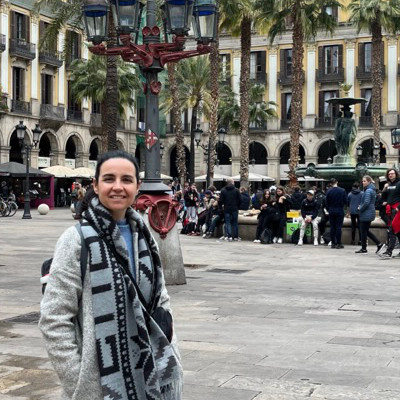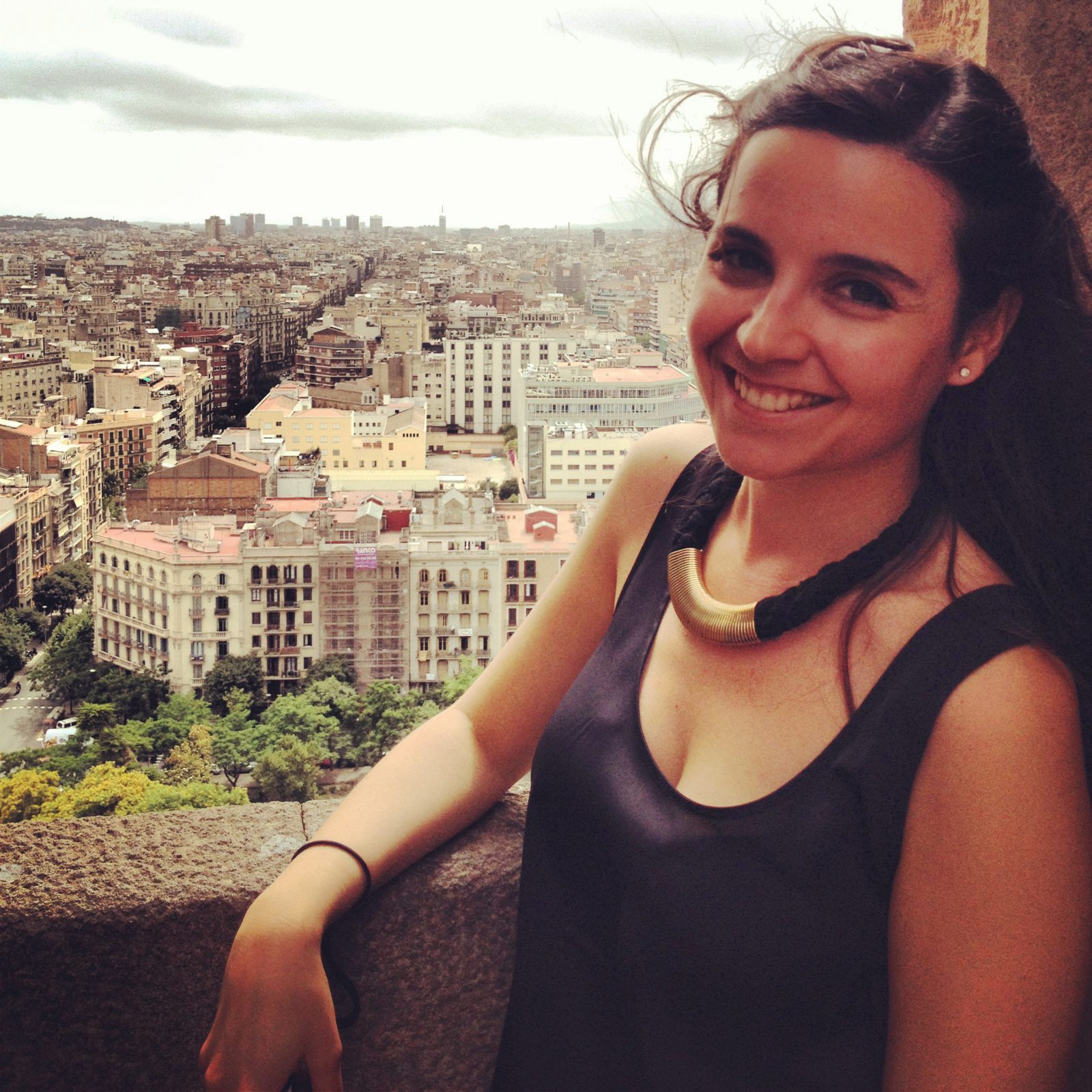The close connection between Barcelona and architect Antoni Gaudí (1852-1926) is more than evident. Masterpieces such as the Sagrada Família, Park Güell, Casa Milà, or Casa Batlló mesmerize thousands of tourists daily and have become true attractions. However, there are many more sights in Barcelona designed by the brilliant Gaudí! So grab a pen quickly and note down the following places to visit during your next city trip to Barcelona!
The Lesser-Known Works of Gaudí in Barcelona
As an architect in a then-thriving Barcelona, Gaudí was involved in numerous projects beyond building structures, such as creating street lamps, furniture, fences, factories, and even gardens. Many of these buildings are much less known to the general public, but are still worth visiting.
1. Casa Calvet
At Carrer Casp number 48, near Plaça Catalunya, we find Casa Calvet, built by Gaudí between 1898 and 1900. This was a commercial and residential building, built on one of the most extraordinary streets of the new Eixample district in Barcelona.
The house is an elegant building with a more traditional appearance than Gaudí’s later works. It was built for the Calvet family. The cellar and the ground floor were for the family business in the textile industry, the first floor was the owner’s residence, and the other floors were for rent.
In 1900, Casa Calvet won the award for the best building in the city and in 1969 it was included in the UNESCO World Heritage List.
Since Casa Calvet is still a private residence, we cannot view it from the inside, but the restaurant on the ground floor, which has managed to preserve many of the original details of Gaudí, is open to the public.
Address: Carrer Casp, 48 / Metro: Urquinaona (L1 and L4)

2. Torre Bellesguard
The Torre Bellesguard (also known as Casa Figueres) is a beautiful house that Gaudí built between 1900 and 1909 for the wealthy Maria Sagués at (then isolated) Carrer Bellesguard number 16-20.
The villa with garden blends Gothic influences with Gaudí’s unique style and is an example of Gaudí’s ability to integrate historical elements into his distinctive designs.
The exterior is known for its pronounced cubic volume and slender angular tower. Inside, this house surprises with its decorative elements and beautiful vault in the attic room, and because it has a hidden dragon on the roof. The gardens also deserve your attention.
With this piece, Gaudí paid tribute to the history of Catalonia by restoring the Catalan Gothic style with which he mixed his own personal vision of architecture.
The Torre de Bellesguard was added to the UNESCO World Heritage List in 1969 and has been open to the public since 2013.
Address: Carrer Bellesguard, 16-20 / Metro: Av. Tibidabo (L7)

3. Güell Estate Pavilions
The Pavilions of Finca Güell are a series of constructions that Gaudí built between 1884 and 1887 on the estate of the Güell family, which was then located outside the city. The Güell estate pavilions were Güell’s first commission to Gaudí. He was asked to design the wall and the entrance gates to the estate, as well as the stables and the riding arena.
The most distinctive element of the Pavilions of Finca Güell is the monumental iron gate, cast in 1885 in the workshop of Valle y Piqué in Barcelona. The dragon represents the legend of the Hesperides and the Dragon Tree and is the immortal guardian of the estate.
Today, the pavilions at the entrance of the former estate, with the gate, the stables, the riding arena, and especially the monumental iron gate, can be visited.
While not as grand as some of his other works, the Güell Pavilions showcase Gaudí’s refined and decorative style, especially in the details of the wrought iron and mosaic work.
Address: Avinguda de Pedralbes, 7 / Metro: Maria Cristina (L3)

4. Miralles Estate Gate
For the Miralles estate, Gaudí built a wall and entrance gate that can still be seen at Passeig Manuel Girona number 59. The undulating wall is a prime example of Gaudí’s unmistakable style. The modernist architect built only the fence and the gate, elements that, due to their uniqueness and architectural value, are the only remnants of the old estate.
Currently, the wall and the gate serve as a fence for some buildings that were built in the late 1960s and are popularly known as “Les Cotxeres”.
An interesting detail here is the figure seen at the entrance door: it is a life-size image of Gaudí himself. The statue dates from 1999 and was created by sculptor Joaquim Camps Giralt.
Address: Passeig Manuel Girona, 59 / Metro: Maria Cristina (L3)

5. School Building for the Teresianes
In 1889, Gaudí was commissioned to complete the construction of the Col.legi de les Teresianes in Sant Gervasi de les Cassoles (then still a village outside the city). The tight budget was no problem for the architect, who designed a very simple building, but full of mystical symbolism and imaginative constructive ideas.
The most characteristic element of the school building is, first, its appearance, which resembles a medieval castle, and second, the long corridors with parabolic arches that surround the patios like a cloister and give a special atmosphere of seclusion to the place.
Gaudí also designed the garden of the school, which was later replaced to make way for the Rondas.
Despite damage to the school in 1936, when the building was attacked and plundered, it still functions as an educational building.
Address: Carrer Ganduxer, 85 / Metro: La Bonanova (L6)

6. Lamp Posts at Plaça Reial
Gaudí’s first commission for the city of Barcelona was these two lamp posts found at Plaça Reial.
Gaudí designed these lamp posts in 1878, when he was just 26 years old. The municipality had asked him to design a new model for a gaslight lamp post. The lamps were to be installed throughout the city. Unfortunately, only a few were made: the two at Plaça Reial and three at Pla de Palau.
Address: Plaça Reial / Metro: Liceu (L3)

7. Cascade Fountain of Parc de la Ciutadella
To pay for his studies, Gaudí worked on other projects during his student years, such as the construction of Parc de la Ciutadella, which was designed by Josep Fontserè i Mestre.
Gaudí contributed ideas for the monumental waterfall and designed the gate at the entrance of the park and a balustrade.
Address: Passeig de Picasso, 21 / Metro: Ciutadella Vila Olímpica (L4), Arc de Triomf (L1)

8. Mosaic in Esglèsia de Sant Pacià
Another project Gaudí worked on in his early years – but not many people know about – was the decoration of the church Esglèsia de Sant Pacià in the Sant Andreu district.
Architect Joan Torras i Guardiola commissioned Gaudí to design the sacristy, the main altar, the choir, the lights, and the mosaic of the chapel.
Due to a large fire in 1909, in which almost the entire convent was lost, the church and most of Gaudí’s work were heavily damaged. Only the mosaic that adorns the floor of this parish church was spared.
Address: Carrer de les Monges, 27 / Metro: Sant Andreu (L1) and Onze de Setembre (L9Nord and L10)

9. Fountain at Parc Pedralbes
Another relatively unknown work of Gaudí in Barcelona is the Hercules Fountain, hidden in the gardens of Palau Reial de Pedralbes, also known as Parc de Pedralbes.
This fountain embodies Gaudí’s pursuit of beauty and art in all aspects of the urban landscape, even in functional elements like fountains.
Address: Av. Diagonal, 686 / Metro: Palau Reial (L3)

Did you know all these places and which would you like to visit? Leave your comment in the comments!





